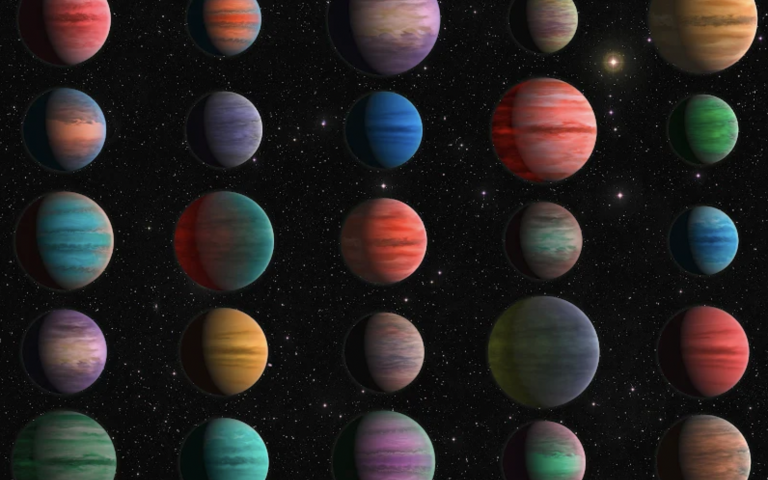Five long-standing questions about planets outside our solar system known as "hot Jupiters" have been answered in a major new study led by UCL researchers.

The study, published in The Astrophysical Journal Supplement Series, is one of the largest ever surveys of exoplanet atmospheres ever undertaken. Researchers employed high performance computers at the DiRAC HPC facility to analyse the atmospheres of 25 hot Jupiters using data from about 1,000 hours of telescope observations.
Hot Jupiters are gas giants that orbit close to their star, typically in less than 10 days. While there are none in our own solar system, they are a commonly observed type of planet outside it.
By using a large sample of exoplanets and analysing an extremely large amount of data, the researchers were able to determine trends and resolve questions that smaller studies have been unable to conclusively answer over many years.
Among the findings, the researchers discovered that the night and day sides of hot Jupiters are very different, with temperatures plunging by hundreds of degrees centigrade from day to night (on average the researchers found a 1000K difference).
They also found that many hot Jupiters had thermally inverted atmospheres, also known as stratospheres - that is, their upper atmospheres has temperatures that increase with altitude. This appeared to be caused by the presence of metallic elements (titanium oxide, vanadium oxide and iron hydride) which absorbed the star's light and thus heated up the atmosphere. This is a similar phenomenon as occurs on Earth via the ozone layer.
The researchers also confirmed that molecules were breaking apart in the hottest planets; they found some planets had less water than expected, suggesting they formed in a different way to the more water-abundant planets; and they detected more metals than predicted by models, meaning that those planets likely formed differently from what was previously thought.
The researchers said a better understanding of exoplanets will help to resolve questions about the evolution of our own solar system.
Lead author Dr Quentin Changeat (UCL Physics & Astronomy) said: "Many issues such as the origins of water on Earth, the formation of the Moon, and the different evolutionary histories of Earth and Mars, are still unsolved despite our ability to obtain in-situ measurements. Large exoplanet population studies, such as the one we present here, aim at understanding those general processes."
Co-lead author Dr Billy Edwards (UCL Physics & Astronomy and Commissariat à l'énergie atomique et aux énergies alternatives, or CEA) said: "Our paper marks a turning point for the field. We are now moving from the characterisation of individual exoplanet atmospheres to the characterisation of atmospheric populations."
The research team used data from 600 hours of observations from the NASA/ESA Hubble Space Telescope, and 400 hours from the Spitzer Space Telescope. They combined two techniques - studying information from transits (where the planet passes in front of its star) and eclipses (when the planet passes behind its star). The tools they created were open source and now available to all researchers around the world.
This work was made possible by the collaborative use of large supercomputing facilities: the UK's DiRAC High Performance Computing (HPC) facility, funded by the Science and Technology Facilities Council (STFC), and the OzSTAR facility at Swinburne, Australia. Significant computing resources were required since each planet observation had to be tested against millions of atmospheric models in order to extract the best possible scenarios.
Dr Ahmed Al-Refaie, Head of Numerical Method at the UCL Centre for Space Exochemistry Data and co-author of the study, said: "The need for state-of the art tools and supercomputing resources are paramount in making these types of large-scale analysis possible, especially as the field of exo-atmospheres is moving to the era of the James Webb Space Telescope and ESA's Ariel space mission".
The study involved an international team of researchers from UCL, Queen Mary University of London, University of Exeter, CEA, LISA, the University of Zurich, the University of Florence, the Flatiron Institute in the US, and the National Astronomical Observatory of Japan (NAOJ) and The Graduate University for Advanced Studies, SOKENDAI, Japan. The research was supported by UKRI, STFC, the UK Space Agency, the European Research Council, CNES (France), CNRS (France), ANR (France) and the Japan Society for the Promotion of Science.






